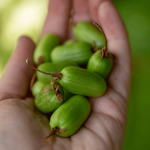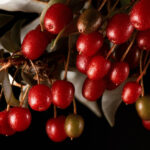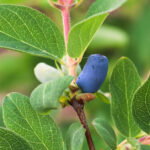Plant Profile: Hazelnut – A Nutty Delight for Your Garden
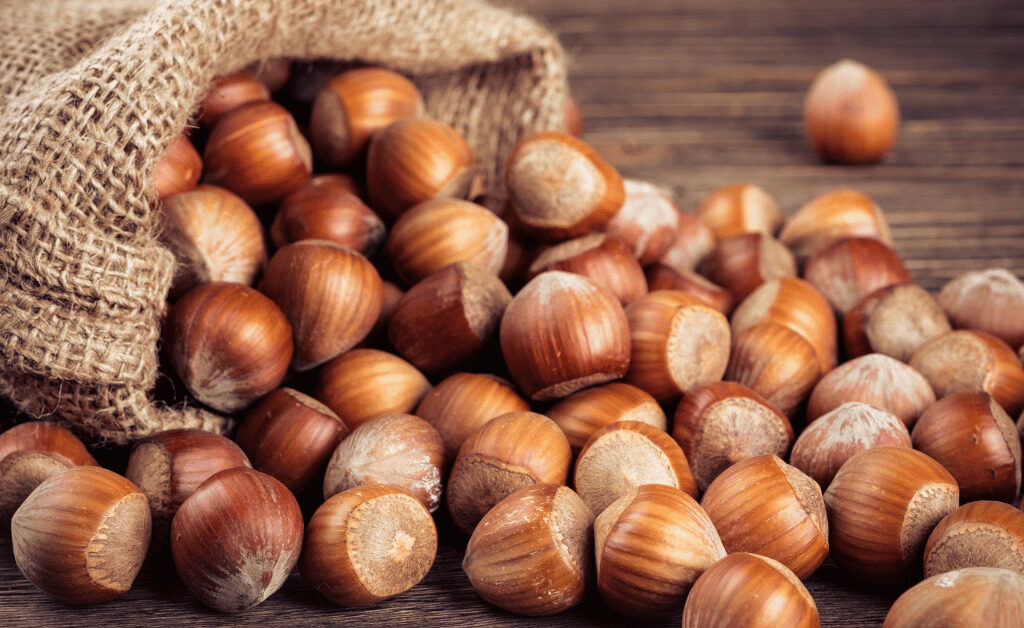
The Hazelnut, also known as cobnut or filbert, is the fruit of the Hazel tree (Corylus avellana).
Classification
The Hazelnut belongs to the Corylus genus in the Betulaceae family.
Origin and Distribution
Hazelnuts have a rich history dating back to Mesolithic times, with large-scale nut processing evidence found in Scotland. Today, Turkey is the world’s largest producer of hazelnuts, accounting for 64% of total production in 2021.
USDA Hardiness Zones
Hazelnuts are quite adaptable and can thrive in a range of climates, specifically those classified as USDA Hardiness Zones 4 to 9. This means they can withstand minimum temperatures from -30 degrees Fahrenheit (-34.4 degrees Celsius) to 20 degrees Fahrenheit (-6.7 degrees Celsius).
Hazelnut Chill Hours Requirement
Hazelnuts, being deciduous trees, require a certain amount of chilling in the winter to overcome dormancy in catkins, female flowers, and vegetative buds. This is measured in chill hours, which are the cumulative hours in a year when the temperature is between 0-7°C (32-45°F). The chill hours requirement varies with different cultivars of hazelnuts. For instance, the cultivar ‘Tonda di Giffoni’ requires about 600 chill hours, while ‘Casina’ needs up to 1500 chill hours. It’s important to consider these requirements when choosing a hazelnut variety to plant, as insufficient chill hours can affect the tree’s productivity and health.
Growth Habits
A hazelnut tree typically grows to a height of 3-8 meters (10-26 feet). The nuts are roughly spherical to oval, about 15–25 millimeters (5⁄8–1 inch) long and 10–15 mm (3⁄8–5⁄8 in) in diameter.
Role of Hazelnuts in a Food Forest
They offer several benefits when grown in a food forest, aligning well with permaculture principles. Here are some of the benefits of growing hazelnuts in a food forest:
Hedging
With their dense, shrub-like structure, Hazelnuts are ideal for use as a hedge in both permaculture and food forest systems. They can create natural borders within your garden or food forest, effectively separating different areas. In addition to their practical function, they also add a visually pleasing element to the landscape with their lush foliage and attractive nuts.
Edible
Hazelnuts are a delicious and nutritious food source. They can be used in a variety of dishes, offering a rich, nutty flavor that complements many other ingredients. This makes them a valuable addition to the food forest, contributing to the diversity of produce you can harvest.
Wildlife Support
Hazelnuts are favored by various wildlife, including birds, deer, squirrels, and other animals. Songbirds and small mammals will also nest in the plant, making it a great choice for supporting local ecosystems and promoting biodiversity.
Easy to Grow
Hazelnuts are relatively easy to grow and can integrate into existing landscapes. This makes them a good choice for both experienced gardeners and those new to food forest cultivation.
Agroforestry Opportunity
Hybrid hazelnuts offer a new agricultural opportunity. They can be grown as part of a system of woody agriculture that supplies food staples from domesticated woody perennial plants. This aligns with the principles of sustainable and regenerative agriculture, making hazelnuts a forward-thinking choice for your food forest.
When planting hazelnuts in a food forest, it is important to ensure that they are grown in average, medium, or well-drained soil in full sun to part shade. Hazelnuts are not picky about soil type, but they do prefer good drainage. They also require sufficient nitrogen, so it’s important to companion plant with nitrogen fixers. Hazelnuts are happiest grown informally in naturalized areas, open woodland gardens, or prairies where they can be allowed to spread.
Hazelnut Benefits for Hugelkultur or Permaculture Systems
Hazelnuts can provide several benefits for Hugelkultur or Permaculture systems. Here are some of the specific benefits of growing hazelnuts in these systems:
Silvopasture
Traditionally in Europe, hazels were grown in a silvopasture system with sheep grazing the pasture beneath the trees. This system has the added benefit of controlling weeds, contributing to a more sustainable and efficient use of land.
Nutrient Cycling
Hazelnuts are a good source of nutrients, and their leaves and shells can be used for mulch or compost. This can help improve soil health and fertility, promoting a more productive and sustainable garden or food forest.
Edible Nuts
Hazelnuts are a valuable food crop that can be harvested in the fall and used for a variety of culinary purposes. This makes them a valuable addition to any permaculture system, contributing to the diversity of produce you can harvest.
Tree Types
Hazelnuts are a good tree type to use in Hugelkultur/Permaculture systems, along with black locust and old-growth redwood. Their robust growth and adaptability make them a good choice for this type of system.
Overall, hazelnuts can provide several benefits for Hugelkultur or Permaculture systems, including hedging, silvopasture, nutrient cycling, and edible nuts. Their versatility and adaptability make them a valuable addition to any sustainable gardening or farming system.
Hazelnut Culinary Uses
Hazelnuts are used in baking and desserts, confectionery to make praline, and also used in combination with chocolate for chocolate truffles and products such as chocolate bars, hazelnut cocoa spread such as Nutella, and Frangelico liqueur. Hazelnut oil, pressed from hazelnuts, is strongly flavored and used as a cooking oil.
Cultural Significance
Cultural Significance: Hazelnuts have been culturally significant for thousands of years, carrying various meanings and uses across different cultures. Here are some of the cultural significances of hazelnuts:
Symbol of Good Luck and Fertility
Hazelnuts, like many nuts, were ancient symbols of good luck and fertility. This belief was prevalent in many cultures, reflecting the life-giving properties attributed to these nutritious kernels.
Christian Symbolism
With the rise of Christianity in Europe, hazelnuts were imbued with new Christian meanings. Characterized by three distinct parts, nuts were interpreted as a sign of the Trinity, a central concept in many Christian denominations. Even today, hazelnuts remain a common part of Christmas traditions in various cultures.
Associated with Sacred Pagan Sites
In Scotland, Ireland, and England, hazelnuts were associated with sacred pagan sites. In prehistoric times, these sites were often understood to be the dwelling places of the gods, and hazelnuts were seen as a divine gift.
Indigenous Uses
Many indigenous tribes, including the Cherokee, Chippewa, Dakota, and Iroquois, used hazelnuts for a variety of purposes. Hazelnuts were used as food in a variety of dishes, including soup, bread, and corn pudding. Nuts were also eaten raw, either alone or with honey, and stored as food for winter. The Iroquois also crushed fresh nut meats and boiled them for use as a drink.
Versatile Shrub
The Hazelnut is a versatile shrub with many landscape, wildlife, and human uses. The American variety of hazelnut (Corylus americana) was used by indigenous tribes for food and medicine.
Hazelnuts have been cultivated for thousands of years, with their cultivation dating back to the Mesolithic period. While they are native to Europe and Asia, the American variety of hazelnut (Corylus americana) was also used by indigenous tribes for food and medicine.
Propagation and Care: The majority of commercial hazelnuts are propagated from root sprouts. Some cultivars are of hybrid origin between common hazel and filbert.
Pests and Diseases
Hazelnuts, like any other plant, are susceptible to a range of pests and diseases. Some of the most common pests that can affect hazelnuts include:
- Aphids: These small, sap-sucking insects can cause damage to the leaves and stems of the plant.
- Brown Marmorated Stink Bugs: These bugs can cause significant damage to the nuts themselves.
- California Prionus Beetle: The larvae of this beetle can damage the roots of the plant.
- Eyespotted Bud Moth, Filbert Bud Mite, Filbert Leafroller, and Filbertworm: These pests can cause damage to the buds, leaves, and nuts of the plant.
- Garden Symphylan: These soil-dwelling pests can damage the roots of the plant.
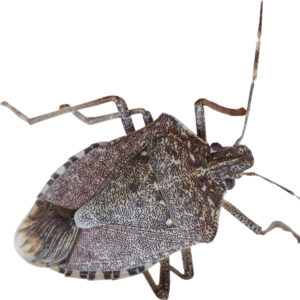
In terms of diseases, hazelnuts can be affected by:
- Armillaria Root Rot (Oak Root Fungus): This fungus can cause the roots of the plant to rot and die.
- Eastern Filbert Blight: This fungal disease is one of the most serious threats to hazelnuts. It can cause cankers on the branches and trunk of the plant, and if left untreated, can kill the plant within a few years.
- Powdery Mildew: This fungal disease can cause a white, powdery coating on the leaves of the plant.
- Bacterial Blight: This bacterial disease can cause wilting and death of branches.
Eastern Filbert Blight, caused by the fungus Anisogramma anomala, is a significant threat to hazelnut trees. This fungus has a two-year disease cycle, typically infecting the apical bud during the wet season. Symptoms, characterized by the formation of black, elliptical cankers on the branches, may not appear until the second summer after infection. These cankers continue to spread each year, making the disease difficult to control. Management strategies include the use of systemic fungicides and cultural practices such as scouting orchards, pruning and removing cankers, and removing plant debris from the ground
Maintaining the health of hazelnut trees requires a combination of good cultural practices, such as regular watering, fertilizing, pruning, and weeding, as well as the use of disease-resistant varieties where possible. Regular monitoring for signs of pests and diseases can also help to catch any problems early, before they become too severe4.
Harvesting and Storage
Hazelnuts are harvested annually in mid-autumn. Most commercial growers wait for the nuts to drop rather than using equipment to shake them from the tree. The harvesting of hazelnuts is performed either by hand or by manual or mechanical raking of fallen nuts.
Fun Facts: In 1995, evidence of large-scale Mesolithic nut processing, some 8,000 years old, was found in a midden pit on the island of Colonsay in Scotland.
Discover the Resilience of American Hazelnuts
Intrigued by the versatility of hazelnuts? Take your knowledge a step further by exploring our upcoming article on the resilience of American Hazelnuts. Learn about my personal experiences with this hardy plant and how it stands up to various conditions. [Stay tuned for our deep dive into American Hazelnuts here]

